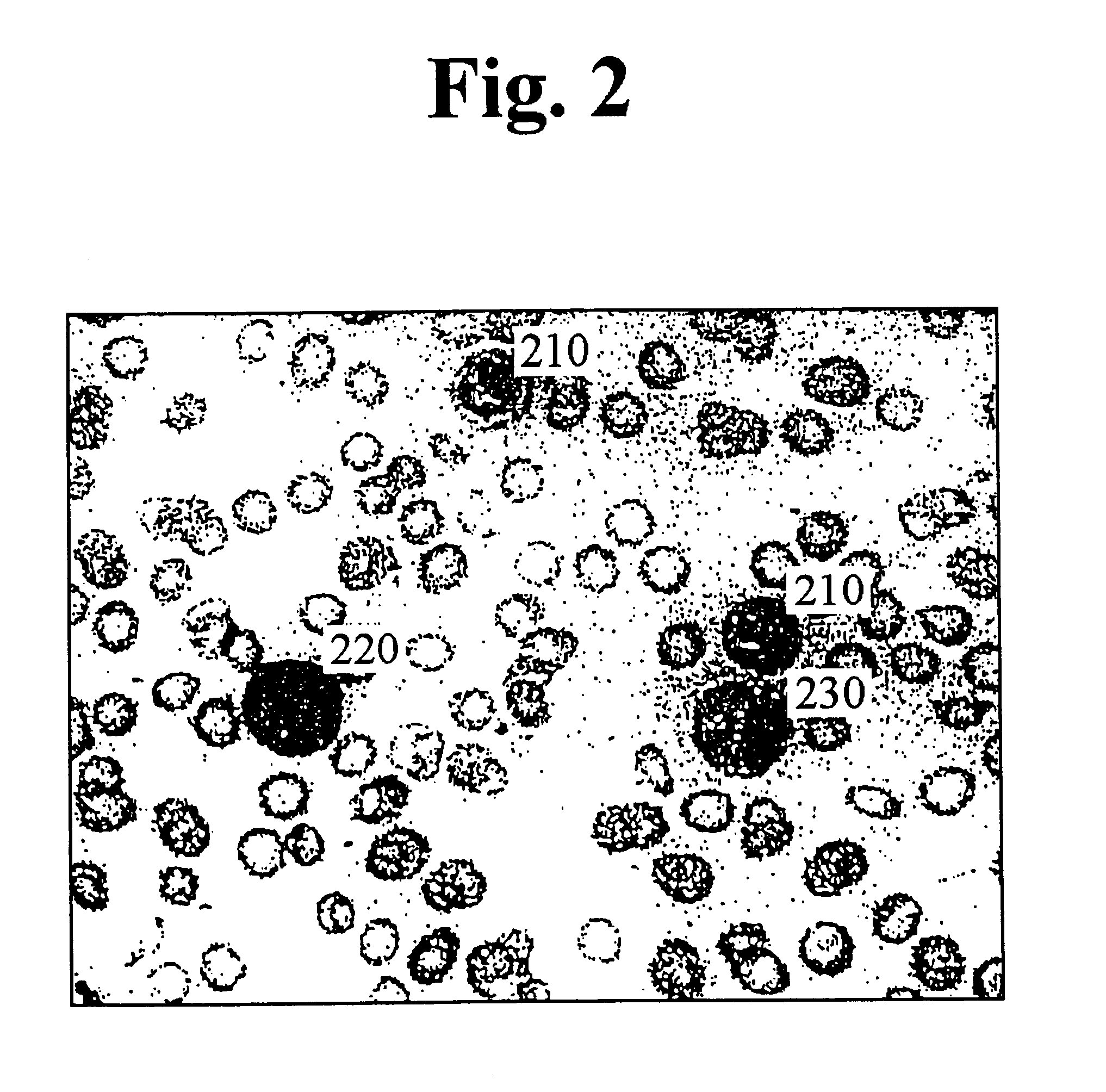Method and apparatus for automatically recognizing blood cells
a technology of automatic recognition and blood cells, applied in the direction of general purpose stored program computers, instruments, architectures with multiple processing units, etc., can solve the problems of inability to recognize the five kinds of normal white blood cells or classify, and requires a lot of time and effor
- Summary
- Abstract
- Description
- Claims
- Application Information
AI Technical Summary
Problems solved by technology
Method used
Image
Examples
Embodiment Construction
FIG. 1 shows a schematic block diagram of a blood cell automatic-recognition apparatus in accordance with one embodiment of the present invention. As illustrated, the apparatus 130 includes a microscope stage 20 on which a blood smear is laid, horizontal driving means 30 for moving the stage 20 to the right or left direction, vertical driving means 40 for moving the stage 20 up and down, two controllers 50 and 60 for controlling the driving means 30 and 40, respectively, and a microscope lens 70 for enlarging an image of blood cells. Further, the apparatus 130 includes a color CCD camera 80 for converting the enlarged image of blood cells into the corresponding TV analog signals, an image capture board 90 containing an A / D converter, a memory 100 for storing the captured image data, control logic means 110 for recognizing blood cells by calculating cell-characteristic parameter values for each blood cell in the image data, and a limit switch 120 attached to the stage 20 for limiting...
PUM
 Login to View More
Login to View More Abstract
Description
Claims
Application Information
 Login to View More
Login to View More - R&D
- Intellectual Property
- Life Sciences
- Materials
- Tech Scout
- Unparalleled Data Quality
- Higher Quality Content
- 60% Fewer Hallucinations
Browse by: Latest US Patents, China's latest patents, Technical Efficacy Thesaurus, Application Domain, Technology Topic, Popular Technical Reports.
© 2025 PatSnap. All rights reserved.Legal|Privacy policy|Modern Slavery Act Transparency Statement|Sitemap|About US| Contact US: help@patsnap.com



